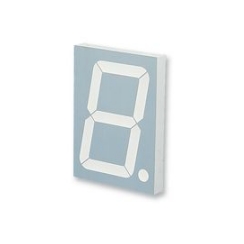Mainstream resistor parameters product series parameters
Mainstream Resistor Parameters Product Series
I. Introduction
A. Definition of Resistors
Resistors are fundamental electronic components that limit the flow of electric current in a circuit. They are essential for controlling voltage and current levels, ensuring that electronic devices operate safely and effectively. Resistors come in various types and specifications, each designed for specific applications.
B. Importance of Resistor Parameters in Electronics
Understanding resistor parameters is crucial for engineers and hobbyists alike. The performance of a resistor can significantly impact the overall functionality of an electronic circuit. Parameters such as resistance value, tolerance, power rating, and temperature coefficient determine how a resistor behaves under different conditions, influencing circuit design and reliability.
C. Overview of the Article's Purpose
This article aims to provide a comprehensive overview of mainstream resistor parameters, including the different types of resistors, key parameters, resistor series, applications, and guidance on selecting the right resistor for specific needs.
II. Types of Resistors
A. Fixed Resistors
Fixed resistors have a constant resistance value and are the most commonly used type in electronic circuits.
1. Carbon Composition Resistors
These resistors are made from a mixture of carbon and a binding material. They are inexpensive and can handle high energy pulses, but they have a relatively high tolerance and are less stable over time.
2. Metal Film Resistors
Metal film resistors offer better stability and lower noise compared to carbon composition resistors. They are made by depositing a thin layer of metal onto a ceramic substrate, providing precise resistance values and tighter tolerances.
3. Wirewound Resistors
Wirewound resistors are constructed by winding a metal wire around a ceramic or fiberglass core. They can handle high power levels and are often used in applications requiring high precision and stability.
B. Variable Resistors
Variable resistors allow for adjustable resistance values, making them versatile for various applications.
1. Potentiometers
Potentiometers are commonly used for adjusting voltage levels in circuits, such as volume controls in audio equipment. They consist of a resistive element and a movable contact.
2. Rheostats
Rheostats are a type of variable resistor used to control current. They are often used in applications where high power is required, such as in lighting controls.
C. Specialty Resistors
Specialty resistors are designed for specific applications and include:
1. Thermistors
Thermistors are temperature-sensitive resistors that change resistance with temperature variations. They are widely used in temperature sensing and control applications.
2. Photoresistors
Photoresistors, or light-dependent resistors (LDRs), change resistance based on light exposure. They are commonly used in light-sensing applications, such as automatic lighting systems.
III. Key Parameters of Resistors
1. Definition and Measurement
The resistance value of a resistor is the measure of its opposition to the flow of electric current. It is measured in ohms (Ω).
2. Units of Measurement (Ohms)
Resistance values can range from fractions of an ohm to millions of ohms (megaohms). The choice of resistance value is critical for circuit design, as it affects current flow and voltage levels.
1. Definition and Importance
Tolerance indicates the allowable deviation from the specified resistance value. It is crucial for ensuring that circuits function as intended.
2. Common Tolerance Values
Common tolerance values include ±1%, ±5%, and ±10%. Precision applications often require resistors with tighter tolerances, such as ±0.1%.
1. Definition and Measurement
The power rating of a resistor indicates the maximum amount of power it can dissipate without overheating. It is measured in watts (W).
2. Impact on Circuit Design
Choosing a resistor with an appropriate power rating is essential to prevent failure. Exceeding the power rating can lead to overheating and damage to the resistor and surrounding components.
1. Definition and Significance
The temperature coefficient measures how much a resistor's resistance changes with temperature. It is expressed in parts per million per degree Celsius (ppm/°C).
2. Common Temperature Coefficients
Common temperature coefficients include ±50 ppm/°C for standard resistors and ±5 ppm/°C for precision resistors. A lower temperature coefficient indicates better stability over temperature variations.
1. Definition and Importance
The voltage rating indicates the maximum voltage that can be applied across a resistor without causing breakdown or failure.
2. Relationship with Power Rating
The voltage rating is related to the power rating through the formula: Power (P) = Voltage (V)² / Resistance (R). Understanding this relationship is vital for safe circuit design.
IV. Resistor Series and Their Parameters
1. Explanation of Series
The E12 and E24 series are standard sets of preferred numbers for resistor values. The E12 series includes 12 values per decade, while the E24 series includes 24 values.
2. Common Values and Applications
Common values in the E12 series include 10, 12, 15, 18, 22, and so on. These series are widely used in consumer electronics and general applications.
1. Explanation of Series
The E96 and E192 series provide higher precision with 96 and 192 values per decade, respectively.
2. Precision Applications
These series are commonly used in applications requiring high accuracy, such as instrumentation and precision measurement devices.
1. High-Precision Resistors
High-precision resistors are designed for applications where accuracy is critical, often featuring low temperature coefficients and tight tolerances.
2. High-Power Resistors
High-power resistors are built to handle significant power levels, making them suitable for applications in power electronics and industrial equipment.
V. Applications of Resistor Parameters
1. Role in Circuit Design
Resistors play a vital role in consumer electronics, controlling current and voltage levels in devices such as smartphones, televisions, and computers.
2. Examples of Usage
In audio equipment, resistors are used in volume controls and signal processing circuits, ensuring optimal performance.
1. Importance in Automation
In industrial settings, resistors are essential for automation systems, controlling sensors and actuators.
2. Examples of Usage
Resistors are used in motor control circuits, providing feedback and ensuring precise operation of machinery.
1. Role in Vehicle Electronics
Resistors are critical in automotive electronics, managing power distribution and signal processing in various systems.
2. Examples of Usage
In modern vehicles, resistors are used in engine control units, safety systems, and infotainment systems, contributing to overall vehicle performance and safety.
VI. Selecting the Right Resistor
1. Application Requirements
When selecting a resistor, consider the specific requirements of the application, including resistance value, power rating, and tolerance.
2. Environmental Conditions
Environmental factors such as temperature, humidity, and exposure to chemicals can affect resistor performance. Choose resistors rated for the specific conditions of the application.
B. Common Mistakes in Resistor Selection
Common mistakes include selecting resistors with inadequate power ratings, ignoring tolerance requirements, and failing to consider temperature coefficients.
C. Tools and Resources for Selection
Utilize online calculators, datasheets, and manufacturer guidelines to aid in selecting the appropriate resistor for your application.
VII. Conclusion
A. Recap of Key Points
Resistors are essential components in electronic circuits, with various types and parameters that influence their performance. Understanding these parameters is crucial for effective circuit design.
B. Importance of Understanding Resistor Parameters
A solid grasp of resistor parameters enables engineers and hobbyists to make informed decisions, ensuring reliable and efficient electronic designs.
C. Future Trends in Resistor Technology
As technology advances, we can expect developments in resistor materials, precision, and miniaturization, leading to even more efficient and reliable electronic devices.
VIII. References
A. Suggested Reading
- "The Art of Electronics" by Paul Horowitz and Winfield Hill
- "Electronic Principles" by Albert Malvino and David Bates
B. Industry Standards and Guidelines
- IEC 60115: Resistors for use in electronic equipment
- EIA-96: Preferred number series for resistors
C. Online Resources for Further Learning
- Electronics tutorials on websites like All About Circuits and Electronics-Tutorials.ws
- Manufacturer datasheets and application notes from companies like Vishay and Yageo
This comprehensive overview of mainstream resistor parameters provides a solid foundation for understanding these critical components in electronics. Whether you are a seasoned engineer or a beginner, grasping these concepts will enhance your ability to design and troubleshoot electronic circuits effectively.







